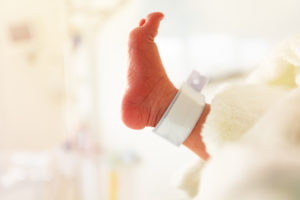
Birth injuries cast a lifelong shadow over a family. Injuries to the mother, child, or both can require expensive medical treatment as well as physical and mental health therapy. In some cases, the injured person may need the assistance of a nurse or caretaker for the rest of their life.
These injuries can cause particular distress when doctors could have prevented them. Not every birth injury results from medical malpractice. For those injuries that do, you can pursue injury compensation to help cover the expenses of the injuries and the disabilities that result.
Understanding the different types of birth injuries is crucial to discerning what compensation you may seek for them.
Table of Contents
What Types of Birth Injuries Can Occur?
Birth injuries happen during pregnancy, labor, and delivery. Birth injuries can injure or kill a mother without affecting the baby. These injuries can also affect the life or health of a baby without impacting the mother. Sometimes, birth injuries affect both the mother and child.
Birth injuries can take many different forms but usually fall into three broad categories:
Physical Injuries
Physical injuries happen frequently, and most do not have lasting effects. These injuries can occur due to the rough handling of the baby during delivery. They can also result from the instruments used during labor and delivery.
Physical injuries can also happen to a fetus when the mother suffers from a fall, car accident, or another form of physical trauma during pregnancy.
Adverse Drug Events
Adverse drug events happen when the mother, child, or both react to medications administered during pregnancy, labor, or delivery.
Drugs can trigger an adverse event in many ways, including:
- Allergic reaction
- Wrong medication
- Adulterated medication
- Overdose or underdose
Responsibility for adverse drug events can fall on doctors, nurses, pharmacists, or drug manufacturers.
Anoxic Injuries
Anoxic injuries happen when something cuts off oxygen to your baby. Sometimes, this occurs when the mother suffers an injury, such as massive blood loss or damage to the placenta.
But the most common causes usually stem from the umbilical cord during delivery. A damaged or knotted cord can deprive the baby of oxygenated blood from the mother.
How Do Birth Injuries Happen?
The rate of birth injuries is about 0.2%. In other words, of every 1,000 deliveries, two babies will suffer birth injuries.
Some birth injuries result from congenital conditions. Other birth injuries result from medical errors. These injuries happen when a normally-developed baby suffers an injury due to a mistake by the doctor, anesthesiologist, pharmacist, nurse, or hospital.
Medical errors that lead to birth injuries take three forms:
Diagnosis Errors
Diagnosis errors happen when a doctor fails to properly diagnose a condition you or your baby might have.
This can happen in a few ways, including:
- Diagnosing you with the wrong condition
- Diagnosing you as healthy when you suffer from a condition
- Diagnosing you with a condition when you are healthy
Diagnosis errors can trigger a cascade of events that eventually leads to a birth injury. For example, a doctor or nurse might miss your baby’s elevated heart rate. As a result, they might not recognize the baby’s distress until after the baby has suffered an injury.
Treatment Errors
Treatment errors happen when a doctor, anesthesiologist, or nurse provides substandard treatment. These errors happen due to poor judgment, lack of skill, inadequate training, or other deficiencies in the delivery of medical services.
Some examples of treatment errors that can lead to birth injuries include:
- Medication errors
- Surgical errors
- Improper use of instruments
- Rough handling of the baby
- Failing to administer emergency treatment
Treatment errors are the errors you usually hear about. A baby with facial nerve damage from forceps has suffered a treatment error.
Communication Errors
Before performing procedures, doctors must obtain informed consent from patients. This involves the doctor explaining the medical issue and possible treatments. After gathering all the information, the patient chooses a treatment option.
Doctors commit communication errors when they fail to obtain informed consent. Suppose your doctor did not explain the risks of anesthesia during delivery. You had the anesthesia and suffered permanent nerve damage as a result. The doctor may have committed a communication error by not obtaining your informed consent.
What Are Some Examples of Birth Injuries?
Birth injuries can take a wide range of forms depending on the problem that arose. Some examples of birth injuries include:
Lacerations, Bruises, and Fractures
Rough handling of the baby during delivery can cause physical injuries like lacerations, bruises, and fractures. For example, a doctor who misuses forceps can injure both the mother and baby during delivery.
Nerve Damage
Nerves carry nerve signals to control your body and collect sensory information. When they get stretched or torn, they cannot carry the signals correctly. Instead, they can drop signals or send errant signals.
Erb’s palsy, also called brachial palsy, is a form of nerve damage where the baby’s brachial plexus gets damaged during delivery. The brachial plexus is a nerve center for the shoulder, arm, hand, and fingers. When the brachial plexus gets damaged, the baby might lose the ability to use the affected arm.
Brain Injury
Brain injuries can happen during labor and birth if the baby is deprived of oxygen. The brain can only go four minutes without oxygen before it suffers permanent brain damage. After eight to ten minutes without oxygen, the brain dies.
Cerebral palsy and other neurological problems can result from anoxic birth injuries. Thus, a baby can suffer brain damage if the cord is wrapped around the baby’s neck during delivery.
Maternal Injury
Maternal injuries can happen during pregnancy, labor, and birth. Pregnancy and delivery stress the mother’s body. If a doctor fails to identify and treat the conditions that can arise during pregnancy, labor, and birth, the mother could suffer injuries such as bleeding, infertility, and even death.
How Do You Seek Compensation for Birth Injuries?
Medical malpractice happens when a healthcare provider fails to meet the professional standard of care. This means healthcare providers must provide reasonably competent medical care under the circumstances. If a healthcare provider does something they knew or should have known was wrong, they have committed malpractice.
Some birth injuries cause minor problems but heal normally within a few weeks or months. Other birth injuries cause permanent disabilities and require a lifetime of treatment, therapy, and daily assistance.
To discuss the compensation you can seek for a child’s birth injuries in Pennsylvania, contact Marzzacco Niven & Associates to schedule a free consultation.
